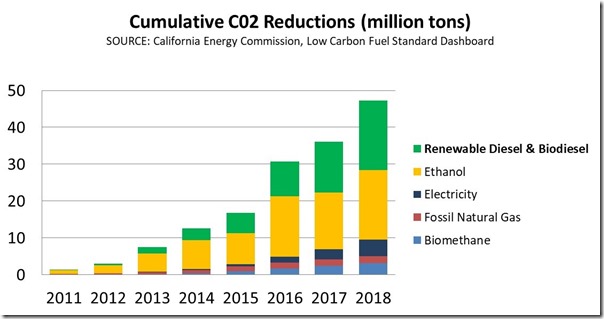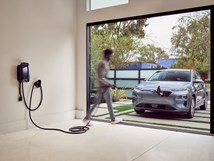Good News for Diesel
Yes, that headline is correct.
Yes, that headline is correct. According to the Diesel Technology Forum (DFT), “new data gathered from the Low Carbon Fuel Standard (LCFS) program run by the California Air Resources Board, biodiesel and renewable diesel fuel deliver the state’s biggest reduction in transportation-related sources of greenhouse gas (GHG) emissions.”
Numbers for 2018 show that biodiesel and renewable diesel fuels—which are categorized by the California Air Resources Board (CARB) and the U.S. Environmental Protection Agency (EPA) as “advanced biofuels”—eliminated 4.3 million tons of carbon dioxide. Points out Allen Schaeffer, executive director of DFT, “Even though battery electric technologies dominate the headlines, electric cars and trucks in California resulted in only 1.2 million tons of CO2 reductions in 2018.”

(Image source: Diesel Technology Forum)
The proliferation of Teslas notwithstanding, one has to assume that the number of diesel-powered vehicles in California presently dwarfs that of electric vehicles, especially when things like city buses are taken into account: DFT points out that cities including Oakland, San Francisco, Sacramento, and San Diego “exclusively use renewable diesel fuel in city-owned heavy-duty trucks, buses and equipment.” One result is that because the San Francisco Metropolitan Transportation Agency is using advanced diesel in its 632 transit buses, more than 10,000 tons of CO2 isn’t being produced. Still, this is impressive by any measure and bodes well for compression ignition engines.
However, given the de-emphasis of diesel engines for passenger car applications and but minimal numbers in SUVs, seems like the advanced diesel fuels are going to have their biggest impact through heavy-duty vehicles that are capable of using the fuels.
RELATED CONTENT
-
on lots of electric trucks. . .Grand Highlander. . .atomically analyzing additive. . .geometric designs. . .Dodge Hornet. . .
EVs slowdown. . .Ram’s latest in electricity. . .the Grand Highlander is. . .additive at the atomic level. . .advanced—and retro—designs. . .the Dodge Hornet. . .Rimac in reverse. . .
-
Mustang Changes for 2018
On Tuesday Ford unveiled—using the social media channels of actor Dwayne Johnson (this has got to unnerve some of the auto buff book editors)—the 2018 Mustang, which has undergone some modifications: under the hood (the 3.7-liter V6 is giving way to a 2.3-liter EcoBoost four, and a 10-speed automatic is available), on the dash (a 12-inch, all-digital LCD screen is available for the dashboard), at the tires (12 wheel choices), on the chassis (MagneRide damper technology is being offered with the Mustang Performance Package), and on the exterior (three new paint colors). And while on the subject of the exterior, there are some notable changes—a lower, remodeled hood, repositioned hood vents, new upper and lower front grilles, LED front lights, revised LED taillamps, new rear bumper and fascia.
-
Multiple Choices for Light, High-Performance Chassis
How carbon fiber is utilized is as different as the vehicles on which it is used. From full carbon tubs to partial panels to welded steel tube sandwich structures, the only limitation is imagination.


.jpg;width=70;height=70;mode=crop)







